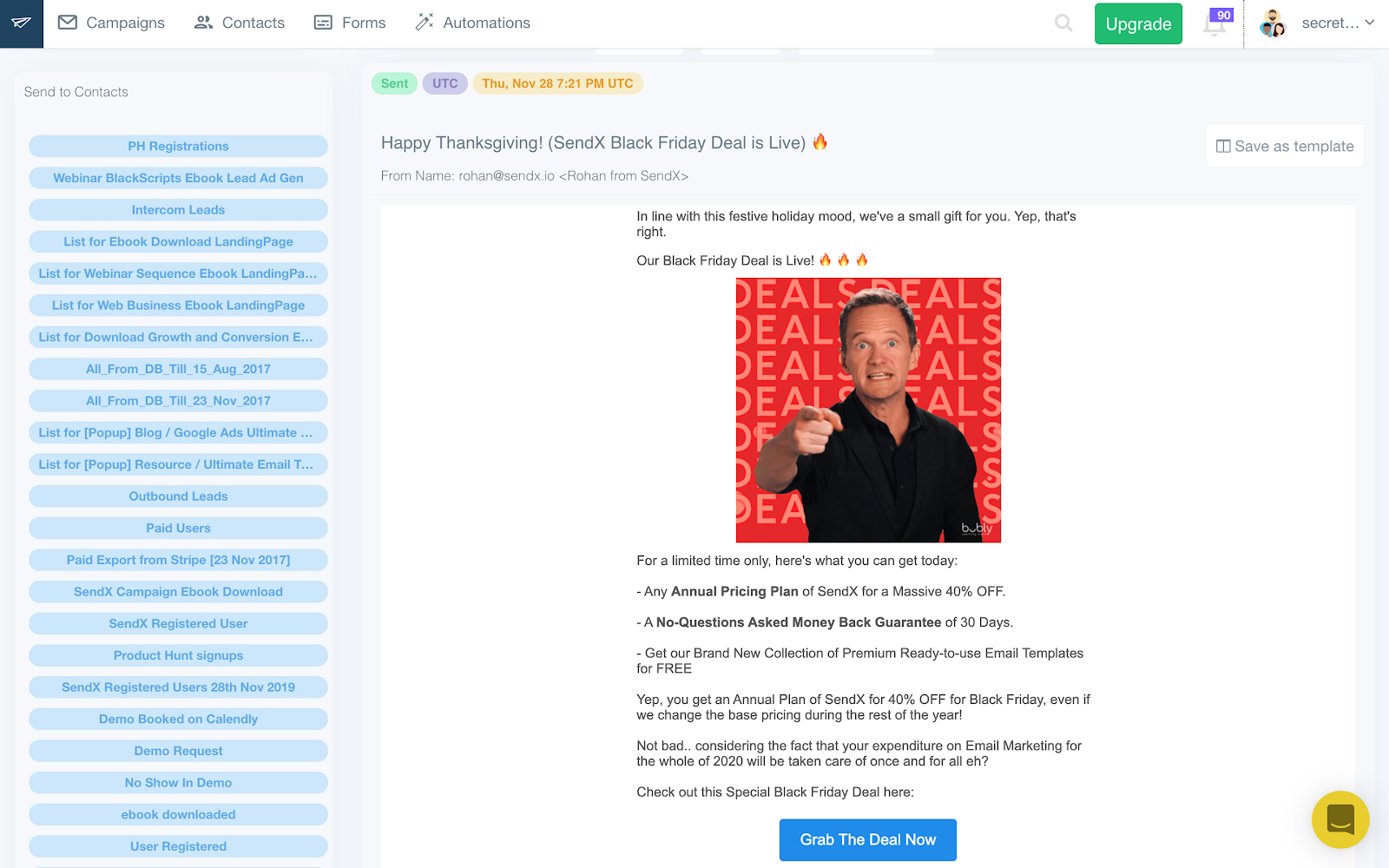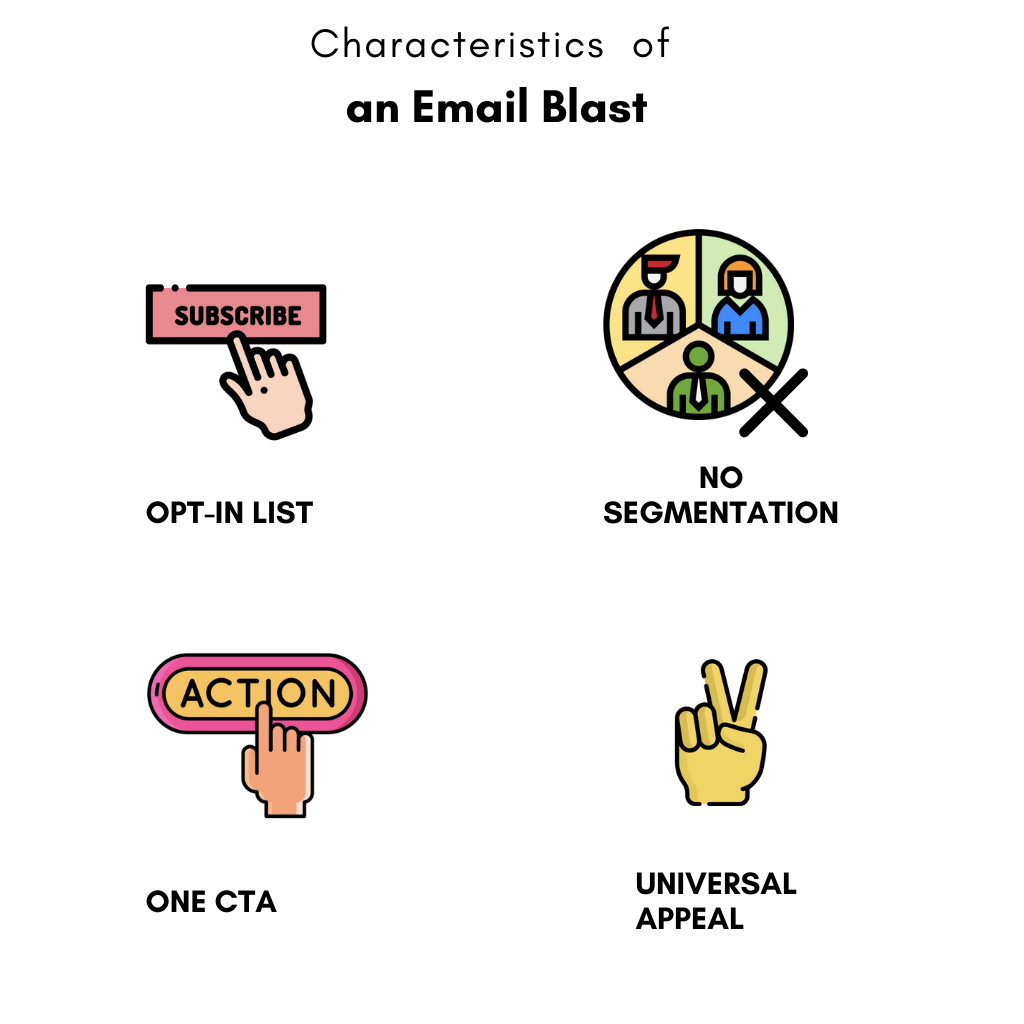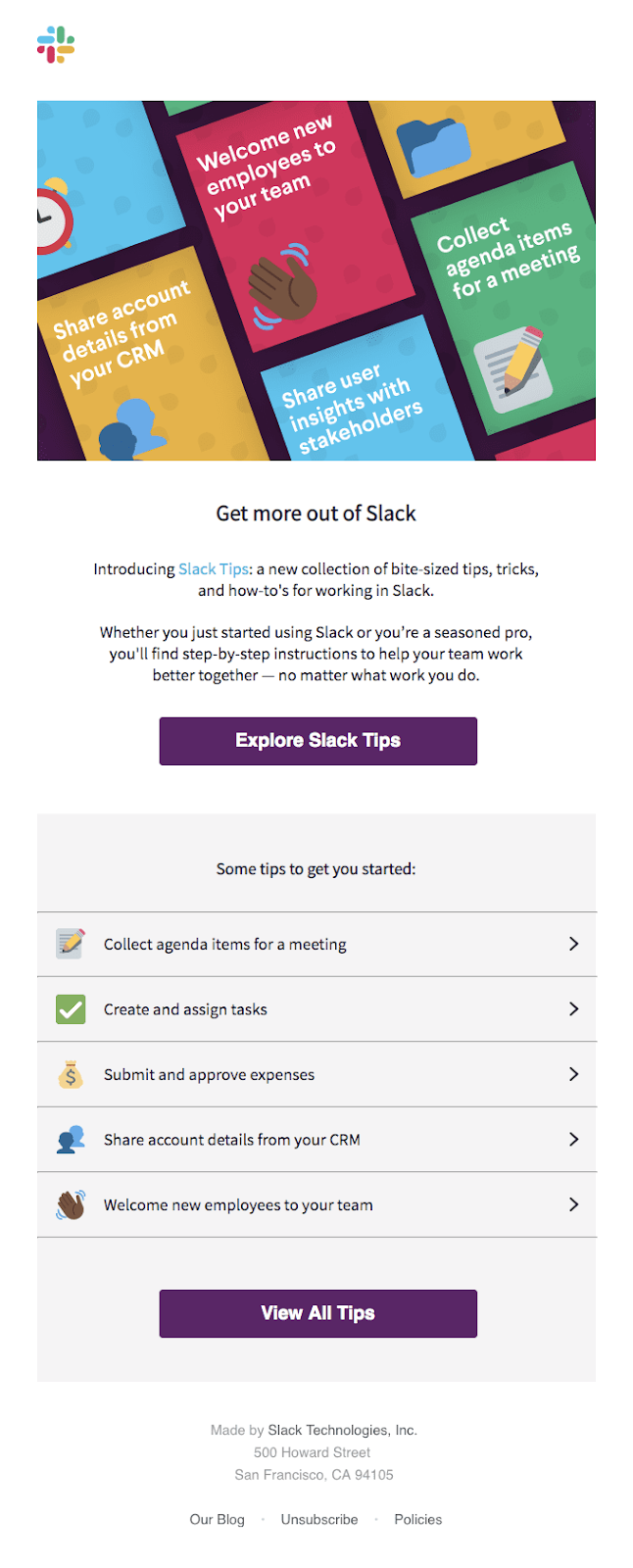Guide to Bulk Email Blasts (Best Practices That Work in 2024)
What did you miss? Let me tell you what you missed while you were busy segmenting but God of email marketing was sharing tips - you can send the same email to everyone and it won’t be a sin.
Instead, it would just be called an email blast. Harmless, if done as told in this guide.So what's an email blast?
An email blast is an email campaign sent to a large set of contacts or all the contacts in your bulk email list, triggered at the same time. There is no limit on the minimum or the maximum number of people that should be on your list to qualify the mark of calling it an email blast.

Table of Contents
- Few characteristics of an email blast
- Show & Tell
- Good things about Bulk Email
- A holistic view of your email list engagement
- Not-so-good things about Bulk Email
- Bulk email best practices go something like this...
- Measure the results: Top 5 metrics to measure
- Sending a bulk email blast with the right software
- Wrap up
Few characteristics of an email blast
- Email is sent only to legit subscribers (opt-in list)
- The mailing list is not segmented
- The email has a universal appeal
- It comes with one clear CTA.

Yes, personalization and segmentation can be done. Cheaply. But that doesn’t mean these should be done all the time.
For example, if you want everyone to know about the new feature of your product or promote a clearance sale at 20% discount to all the customers, all over the world, then your messaging doesn’t change for Martha who is not your paying customer or Sam who is an avid fan or superuser of your app. Both of them would like to know about new features or worldwide sales.
In such cases, sending a mass email is cost and time-efficient. It makes sure your message has reached everyone who ever gave consent to get emails from you.
Show & Tell
Nothing explains a concept better than a visual example. Let’s see some email campaign performance from familiar brands that were ‘blasted’
|
This short email from slack introduces a new feature they had just launched, ‘slack tips’. Notice how it addresses both new users and seasoned pros. The CTA to explore the tips is right after a short text and I think that does a good job of getting to the point quickly. |
 |
|
This is a classic mass email from Apple after they launched AirPods. It doesn’t have any personalization, or private discount so it’s pretty clear it was blasted. Apple knows that if someone gave them their email & didn’t unsubscriber, they must have had at least one ‘wow’ experience with Apple technology. So this promotional email is aimed at promoting AirPods Pro to the masses. It doesn’t have a chunky copy. Just a few features of the product listed in bold typography. That’s another typical feature of a bulk email. |
 |
|
Here is an example of an annual report by InVision sent to everyone on their list. Notice how it is titled ‘product design report’ which covers a broad niche for everyone who ever signed up for their newsletter. They have skillfully combined promoting the free trial of their other product with this bulk email. Thus making it not sound sales-y. |
 |
|
Bulk emails are great to share a set of guidelines with your audience. Notice the choice of words used here - all, everyone, one another - which shows that these are for everyone that is using the app, be it driver or rider. In Delhi or in LA. The topic - safety and respect are also such that they will resonate with everyone. So sending a bulk email is the most efficient way to communicate these guidelines. |
 |
Apart from promotional campaigns, newsletter is another type of email that is sent to the whole list. It works really well for artists, thought-leaders or companies publishing quality articles on niche topics. However this kind of bulk email isn't just sent out of the blue and requires a long term strategy, rather than short term thinking for quick results.
Good things about Bulk Email
Bulk emails are not just effective, but also efficient - they get the job done without you missing that eyelash appointment or ping-pong competition.
- You save time - because you are not doing any segmentation, heavy personalization or automation.
- You save money - because you can use any basic, affordable ESP to get the job done.
- It doesn’t have to be fancy, ninja ESP. And bulk email rates are cheaper than regular ESP subscription.
A holistic view of your email list engagement
People on your contact list have at least one thing in common - they have discovered your brand. So by sending a bulk email that has the potential to connect with everyone, you also get to analyze the level of engagement of your whole list from a high level.
This metric is not your north star but it gives a sense of how interested people are in your brand.
Not-so-good things about Bulk Email
Email accounts get flagged when abnormal activities happen - and sending out a bulk email out of the blue is definitely one. Your IP can get flagged and you can be banned from using the ESP. You might have to go back to school too. Bulk emails can lack personalization, relevance and candid language.
How to turn not-so-good to good things
The way to avoid the first problem (emails getting flagged) with bulk email is to create an IP warm-up schedule.
Progressively increase the number of recipients of your email campaign. Send emails to a highly engaged audience and then add a less involved audience. 15-30 days is usually good for this procedure.
The way to add some personalization and relevance to your email is to focus on three things:
- Type of message: Have a clear, relevant-for-the-masses message.
- Copy of message: Write as if you are having a conversation rather than writing sending them an office memo
- As much personalization as possible: use the first name of the recipient in the subject line and even in the email body somewhere.
Bulk email best practices go something like this...
Send only to ‘subscribers’
Every contact on your blasting email list should be opt-in. Oh did I say should? Sorry, I meant MUST.
If your subscribers permitted you to send the emails by subscribing or by ticking a box, then it’s an opt-in email list. If you obtained this list from business cards, or third-party ‘source’ but not the permission to send emails, then it is not an opt-in email list.
Doing this will make 3 magical things happen:
- Regulatory compliance with CAN-SPAM laws.
- Ensures that your relation with the subscriber is mutual.
- An enviable bright metric in terms of deliverability and engagement.
KonMari (Clean up) your list
Once you have a ‘subscribers’ list, the next step is to clean it up. Remove any invalid, inactive, spam folder traps or catch-all email addresses.
By doing that, you will avoid being marked as a spammer as you will be sure that you are sending emails to a valid list and people are engaging with your emails. You will also save money by removing irrelevant addresses that were anyway going to bounce.
You can use an online service to do so. They provide 99% accuracy. Check out the list here.
Warm-up your IP
As we already discussed, always send mass emails from a warmed-up IP.
Typically the organic growth of your business, by its nature, creates a warm IP. Most reputation systems only store data for 30 days, so you should not go 30 days or more without sending on any given IP. If you do, then you will need to warm it up again.
Universal messaging
Once your list is checked and all cleaned up, let’s get to the actual email now.
Make sure the message in your email is relevant to almost everyone on your email list. You wouldn’t want to send a message about sale in your Paris store to people in New Zealand. So, don’t be lazy to think through it and segment whenever necessary.
Your subject line should be direct and truthful about what is in the email.
Keep your email short. Subscribers tend to skim longer email messages anyway, so stick to your most important points.
Optimized for mobile
Make sure every bulk email that you send out is optimized for mobile viewing. The majority of people now check emails on their mobile devices. So if your emails do not display properly, your efforts will go in vain.
Include Unsubscribe link
When you send a bulk email, there are high chances you will experience a wave of unsubscribers.
But it’s not always a bad thing. It’s better to have a highly engaged list rather than just a vanity metric of a large no. of a not interested public.
Make unsubscribing easy. One-click. That’s it. Put the unsubscribe link in the footer. Don’t make people log in for unsubscribing.
If you don’t include an unsubscribe link, first of all, you are violating the law.
Secondly, you will have a large number of people reporting spam. Bulk email combined with a surge in spam complaints will spoil your deliverability.
Measure the results: Top 5 metrics to measure
How do you know if your bulk email blast was a success? What criteria would you use to call it effective?
Well, you can look at the right metrics and know that. Here are the top 5:
Open Rate
Email open rate is the percentage of people who opened your email, out of all the people who got it. Now, one person can open the email twice and it will be counted twice so for a clean metric, you can look at only unique opens.
How to calculate:
Emails opened / Emails delivered
Factors affecting it:
Timing: If someone is sending an email at off times like midnight or peak working time, it most probably won’t be opened and later on it would be buried under emails by other smart marketers. So timing is crucial.
Subject line
If the subject line is enticing and the reader will feel there is value inside this email, they will open it. Answer why would the reader care if you use a particular subject line. It’s super easy to A/B test subject lines so always do that to judge your audience.
Click-To-Open-Rate
Open rate doesn’t tell you the whole story. To judge if content was relevant, we need to look at CTOR.
How to calculate:
Total clicks / Emails Opened
Factors affecting it:
Content: The aim of your content should be to make the reader click on the CTA. If content doesn’t add value or convince the reader to click CTA, it just didn’t perform. And that’s when your CTOR would be affected.
CTA: Have one effective call-to-action and everything in your mass mail should be aimed at that CTA. You can use text, buttons, images and place your links on top of these.
Mobile optimisation
Mobile optimisation is not optional. It’s a must have.
If your email is hard to read on mobile, no one's gonna remember to check it on desktop or go through struggle to read it. And I haven’t seen people thinking, ‘ok, I don’t know what this is about but I will still click that fancy button’. So optimise for mobile, tablet, and desktop.
Unsubscribe rate
Unsubscribe rate is the percentage of people that opted-out of your email list.
How to calculate
No. of Unsubscribers / No. of Unique Opens
You should always expect a certain number of people to unsubscribe every time you send a mass email but you don’t need to stress too much over it.
Factors affecting it
I won’t give you specific factors for it because it can be a wide variety of reasons depending on the kind of emails you are sending. It can be the frequency of emails, nature of content or people don’t remember why they subscribed in the first place and now don’t see a point staying on it.
But what’s a good benchmark for unsubscribers? 1%? 10%? No one knows and it varies a lot. However, you can look at your past trend or if it’s your first bulk email, you will just need to experiment a bit more.
Sending a bulk email blast with the right software
The ESP that you use for bulk email doesn’t need to have advanced automation, dynamic content, AI or ability to dispense rainbow skittles. It needs to do these things really well:
Email Delivery
Delivery rate is the percentage of the number of emails delivered divided by the number of emails sent.
Make sure that your ESP has a high delivery rate. It needs to do a lot of technical things on the backend to ensure this. A good ESP will have delivery rate that is above 90%.
24/7 Support
Unlike a campaign that’s sent to a small list, a bulk email is sent to the whole list and if there is a technical glitch in sending email or if you made a mistake and need to stop the campaign, then you will need someone from your ESP side who can support you.
Reporting
If you don’t know the key metrics of your mass campaign, then you can’t calculate the ROI and that’s not a smart strategy.
If you don’t know the final reports, you won’t be able to retrospect and see where you can improve or if it is worth sending a mass campaign or should you send more targeted emails.
So ensure that your ESP can provide key metrics correctly and it’s an icing on the cake if there is a beautiful, realtime dashboard.
Wrap up
You don’t have to treat ESP like a black box where you don’t know what’s happening or get cold feet because it sounds like a big hairy goal to send a mass email.
I know you have a message, and an audience, so you don’t have to stop yourself just because your previous ESP screwed up the delivery.
I would invite you to check out SendX. It’s robust, intuitive, affordable and most importantly trusted by 3000+ companies in the US, Europe and India. It checks all the right boxes and provides 24/7 support by email and chat. You can try it out for 14 days for no fee, no credit card and no hassle. You can check it here.
FAQs
1) What is a bulk email blast?
A bulk email blast is an email campaign sent to a large set of contacts or all the contacts in your list, triggered at the same time.
2) How often should I send bulk email blasts?
It is generally regarded that sending one to two bulk emails a week is ideal for most merchants, especially if you’re just starting out with email marketing. But context is important when it comes to frequency. You need to take a judgment call based on your email marketing strategy.
3) What are the benefits of sending bulk email blasts?
You will derive the following benefits from a bulk email blast.
- You save time - because you are not doing any segmentation, heavy personalization or automation.
- You save money - because you can use any basic, affordable ESP to get the job done.
- It doesn’t have to be fancy, so designing it is easier.
4) What is the downside of sending bulk email blasts?
Email accounts get flagged when abnormal activities happen - and sending out a bulk email out of the blue is definitely one. Your IP can get flagged and you can be banned from using the ESP. Besides, bulk emails can lack personalization, relevance and candid language.
5) What are some bulk email blast best practices?
The following are the best practices of sending bulk email blasts:
- Send only to ‘subscribers’
- Send only to a cleaned up list
- Follow anti-spam hygiene
- Warm up your IP by creating an IP warm up schedule
- Make sure the message in your email is relevant to almost everyone on your email list.
- Optimize for mobile
- Include an unsubscribe link.
6) How will I know if our bulk email blast was a success?
You will know if your bulk email blast was a success by measuring the core metrics of Open rate, Click-to-open rate, Unsubscribe rate, and Email delivery rate.
7) Are mass emails, bulk emails, and e-blasts, all the same?
Yes, mass emails, bulk emails, and e-blasts are some of the terms used to refer to a bulk email blast in mass email marketing.
8) What is bulk email marketing?
Bulk email marketing refers to the practice of sending a large volume of promotional or informational emails to a wide audience simultaneously.


